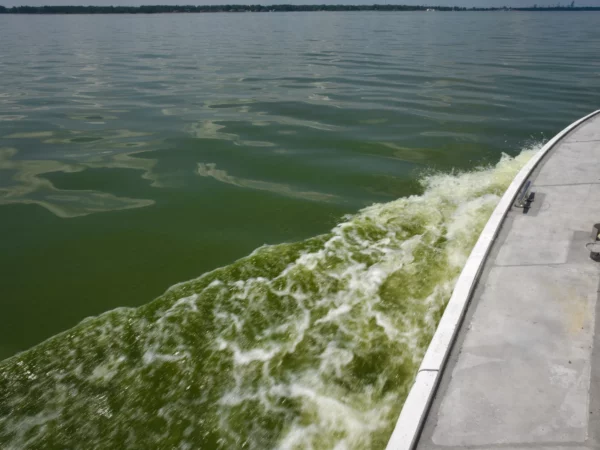
Western Lake Erie algae blooms were mild this year, especially when compared to previous years, the National Oceanic and Atmospheric Administration says in a new analysis.
NOAA says that areas of scum were “fewer, less dense, and less toxic in 2016 than in either 2014 or 2015.”
The severity index of this year’s bloom was 3.2. Last year’s severity index set a record at 10.5. Previously, environmental advocates said a lack of rain limited agricultural runoff into the lake.
NOAA’s bi-weekly Harmful Algal Bloom forecasts ended Oct. 24, when there was no longer a risk for a cyanobacteria bloom in western Lake Erie. Toxins produced by Microcystis, the dominant cyanobacteria in the lake, can cause headaches, nausea and skin irritation.
To report the size of the blooms, NOAA used its own research along with sampling results from universities and citizen programs.
The weekly bulletins started in 2009 and increased to twice weekly last summer.
From Great Lakes Today




